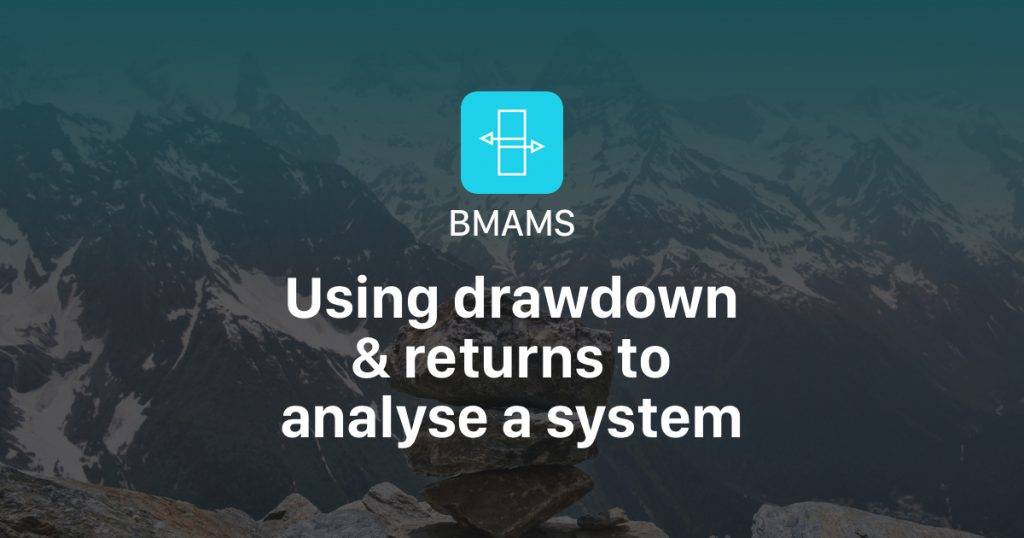
Last week we looked at the drawdown statistic, which effectively tells us the risk a system takes when trading. Here we will combine this risk statistic with the return on investment statistic which will provide us with a method of comparison between different systems.
A system that returns 40% in a year is better than a system that returns 20% in a year- right? Well maybe not. Returns alone do not provide a complete picture of the performance. What is the risk that each system took to achieve these results? This is why combining the return with the drawdown risk offers a better comparison between systems.
Say we have the above returns with these corresponding drawdowns:
System X – 40% return – 20% drawdown
System Y – 20% return – 5% drawdown
System X has 2 times the return to drawdown, but system Y has 4 times the return to drawdown.
System Y would be considered using this metric to be a better performing system. Why? Because by including drawdown we have normalised the relative performance between systems.
System X – 40%/20% = 2.0
System Y – 20%/5% = 4.0
So given the same risk – system Y is producing twice the returns as system X. Let’s say that we normalised each system to give 10% maximum drawdown risk to demonstrate in an alternative way.
System X – 20% risk converted to 10% risk = 0.5 multiple.
0.5 multiple of 40% return = 20% return. So at 10% risk
System X – 20% return at 10% drawdown.
System Y – 5% risk converted to 10% risk = 2.0 multiple.
2.0 multiple of 20% return = 40% return. So at 10% risk
System Y – 40% return at 10% drawdown.
To summarise the above conversion:
System X raw = 40% return 20% drawdown
System X relative = 20% return 10% drawdown
System Y raw = 20% return 5% drawdown
System Y relative = 40% return 10% drawdown
This demonstrates why considering not just the return- but the risk required to achieve those returns is vital in determining the quality of a system.
If only returns were used in our example, system X would be viewed as twice as ‘good’ as system Y.
However, once risk is evened out to be the same on each system, system Y is actually twice as good as system X.
The complete opposite conclusion is reached once risk is included in the comparative analysis.
Originally posted on https://www.bmams.com.au/
The post BMAMS: Using drawdown & returns to analyse a system first appeared on trademakers.
The post BMAMS: Using drawdown & returns to analyse a system first appeared on JP Fund Services.
The post BMAMS: Using drawdown & returns to analyse a system appeared first on JP Fund Services.

Peyman Khosravani is a global blockchain and digital transformation expert with a passion for marketing, futuristic ideas, analytics insights, startup businesses, and effective communications. He has extensive experience in blockchain and DeFi projects and is committed to using technology to bring justice and fairness to society and promote freedom. Peyman has worked with international organizations to improve digital transformation strategies and data-gathering strategies that help identify customer touchpoints and sources of data that tell the story of what is happening. With his expertise in blockchain, digital transformation, marketing, analytics insights, startup businesses, and effective communications, Peyman is dedicated to helping businesses succeed in the digital age. He believes that technology can be used as a tool for positive change in the world.








